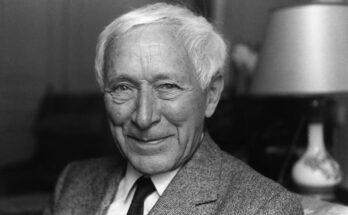Natural numbers are the ones we use to count: 1, 2, 3, 4… And a prime number is a natural number greater than 1 that has only two positive divisors, itself and 1. So 2 is a prime number because it can only be divided by 2 and 1 with an exact result. 3 is also for the same reason. But 4 is not because it can be divided by 1, 2 and 4. There are infinitely many prime numbers, as demonstrated by the Greek mathematician Euclid.
As you say in your question, they are very important. And they come from different points of view. The first is focused on mathematics itself because these numbers are the backbone of many branches of this science, for example they are fundamental to number theory.
But they are also a good example of how mathematics evolves. Initially they began to be studied with the sole interest of increasing knowledge. That is, prime numbers were not studied to find applications but simply out of curiosity to understand them better. We investigated what its properties were, whether there is a formula for calculating prime numbers, how many prime numbers are less than or equal to a given number, whether there is a scheme for identifying them, how to know if a large natural number is prime, etc. The best mathematicians have studied them. I have already told you about Euclid, known as the father of geometry, but also about other Greek mathematicians such as Eratosthenes; and more recently, Pierre de Fermat, Leonhard Euler, Gottfried Leibniz, Sophie Germaine or Carl Friedrich Gauss, among many others. The Riemann hypothesis, still unproven, one of the problems of the millennium Clay Mathematics Institute gifted with a million dollars for whoever solves it, it is closely related to prime numbers.
In basic research, the one that is done to expand knowledge and not think about an immediate application, most of the time, when we already have that knowledge, some application is found. And what happens many times in mathematics is what happened with prime numbers. Thanks to them, for example, a great revolution has occurred in cryptography, which is the science that deals with encrypting or coding messages to make them inaccessible to unauthorized users and which is fundamental for the correct functioning of the Internet and the applications we use. We therefore find that the properties of prime numbers paved the way for important technologies such as electronic communications, mail or commerce, among many others.
One of the key properties of prime numbers for these applications is that they do not follow a pattern. It seems that its distribution is unpredictable, random. That’s why programs are used to search for new prime numbers. In some of this research, the collaboration of citizens is required, that is, anyone can lend their computer to be used, together with thousands or hundreds of thousands of others, in that research.
The prime number with the most digits found so far has more than 41 million digits and was found thanks to one of these citizen collaboration programs in which volunteers from all countries participate.
There are some other questions related to prime numbers that are really interesting. For example, I work with demographic models. And it turns out that in the study of populations, prime numbers appear in some cycles of insects. There are some cicadas that have life cycles of 13 or 17 years, two prime numbers. These insects stay underground and every now and then, at 13 or 17 years of age, they emerge on the surface for a few days to reproduce. The explanation that has been given is that this gives them an evolutionary advantage, as argued by paleontologist Stephen Jay Gould in his work Of bamboo, cicadas and the economy of Adam Smith. If their life cycles were non-prime numbers, 6, 8, 10…, they would coincide with many more predators that have short, regular cycles.
And there’s a funny thing about kibble. It seems that prime numbers have reached marketing. Many times when you order a tapa of croquettes they give you a prime number, usually 5, because most of the time that prime number cannot be divided between the people who ordered them (unless in that case they are 1 or 5), which forces you to order another tapa. Another option, of course, is to distribute them diplomatically, but this way you lose a little of the emotion of the little mathematical dilemma of the aperitif.
Vittoria Otero Espinar She is a professor of Mathematical Analysis at the Department of Statistics, Mathematical Analysis and Optimization of the University of Santiago de Compostela and a researcher at the Center for Mathematical Research and Technology of Galicia (CITMAga), she is also president of the Royal Spanish Mathematical Society.
Coordination and writing:Vittoria Toro.
Question sent via email fromCarla Gomez Inaraja.
Scientists respondis a weekly scientific consultation, sponsored by the programL’Oréal-UNESCO ‘For women in science’ and forBristol Myers Squibbwhich answers readers’ questions about science and technology. They are scientists and technologists, partners ofAMIT(Association of Women Researchers and Technologists), those who answer these questions. Send your questions toarespondemos@gmail.com or via X #werespond.



